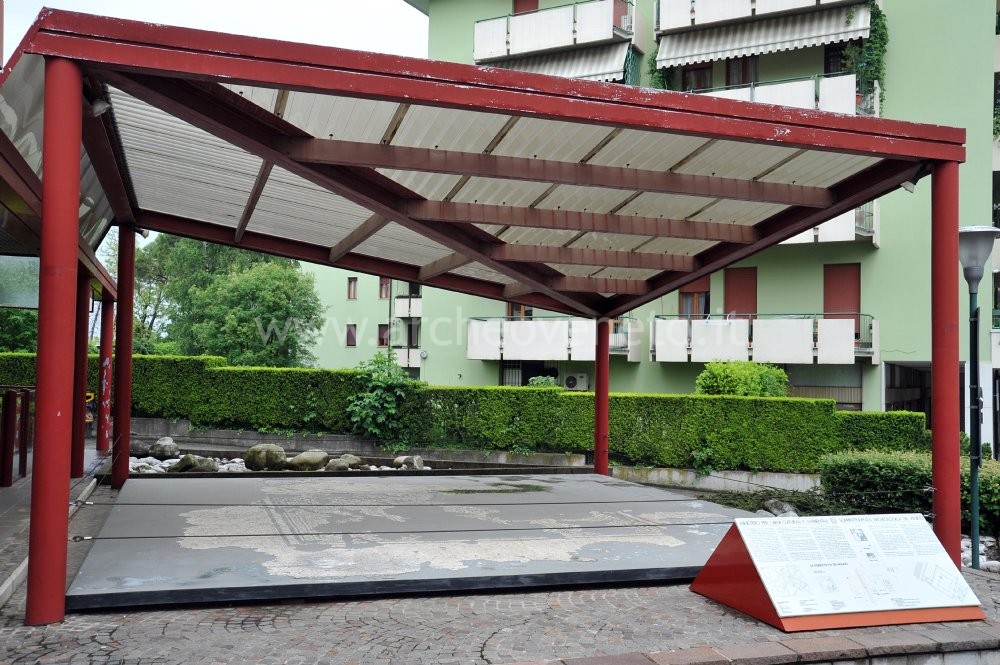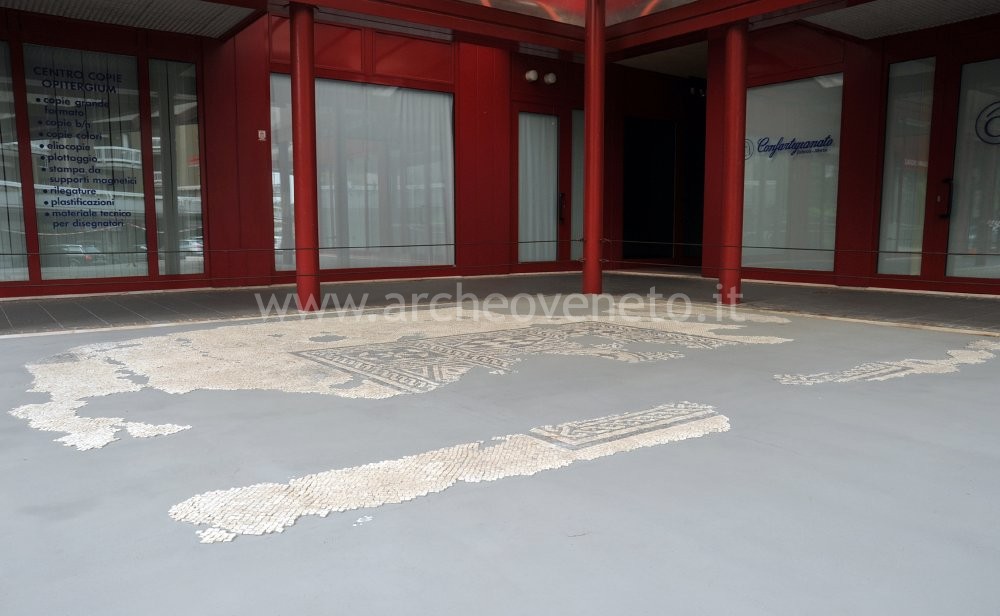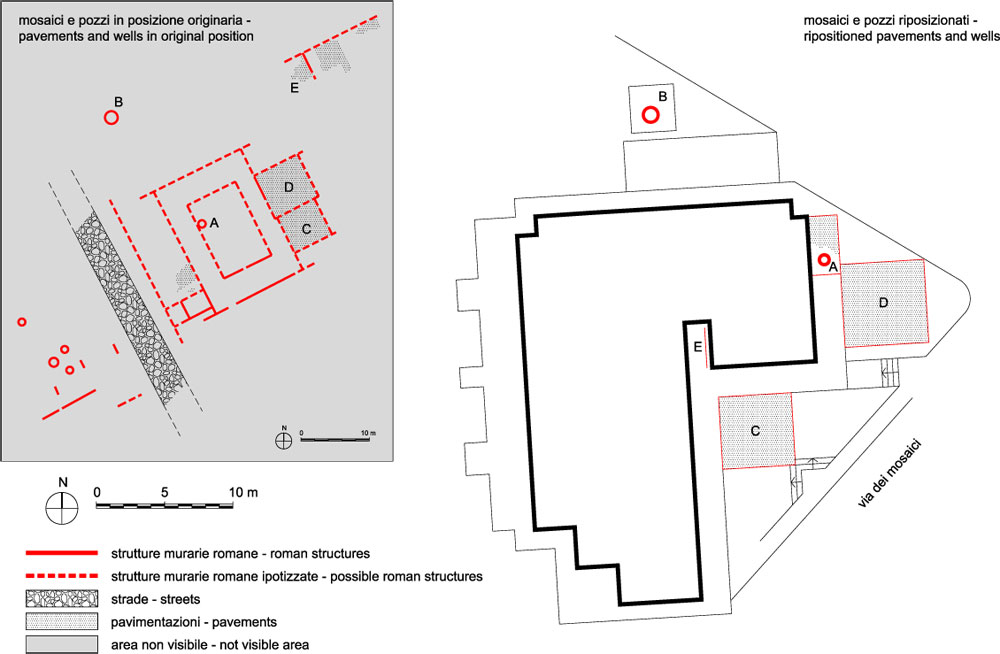|
|
File
Roman mosaics and well in "Via dei Mosaici" – Oderzo
|
| Via dei Mosaici 6-10 – 31046 Oderzo (TV)
|
  |
|
Summary

The archaeological area of the street “Via dei Mosaici” displays the pavement mosaics of a Roman house that was built between the end of the I century B.C. and the beginning of the I century A.D. and which was restored in the II century A.D.
History of research
The excavations were carried out by the General Direction for Archaeological Heritage in the Veneto region, initially between 1951 and 1970 and later between 1984 and 1988, before the construction of the modern buildings.
Urban and geographical context
Oderzo is located in the Veneto plains, between 9 and 16 metres above sea level. The territory of Oderzo is crossed by the Monticano river, which springs nearby Vittorio Veneto and which flows into the Livenza river near the village “Motta di Livenza”. The Roman house which can partially be visited here is located within the modern city centre and at the core of the Roman settlement.
Chronology
I B.C. – II A.D. |

 The archaeological area in the street “Via dei Mosaici” displays the remains of a rich Roman house, a “domus”, that was built between the end of the I century B.C. and the beginning of the I century A.D. and which was later restored in the II century A.D. The archaeological area in the street “Via dei Mosaici” displays the remains of a rich Roman house, a “domus”, that was built between the end of the I century B.C. and the beginning of the I century A.D. and which was later restored in the II century A.D.
The original structure of the house (I B.C – I A.D.) is hardly conserved and known. The house was organized around a central courtyard paved with cobblestones and with “opus signinum”, a pavement made with tiles broken up into very small pieces and mixed with mortar. Part of the “opus signinum” (A) can be seen today in the archaeological area, just nearby the well that was later constructed here for the collection of rain water.
During the II century A.D. the domus was completely restored and was organized around a central courtyard, a peristyle, surrounded by a porch and paved with terracotta tiles. On its eastern side there were four rooms where the house owners hosted their guests. Of these, two were paved in mosaic. The finding of a stairwell during the excavations suggests that the house might have had a second floor. Of the second phase of the house today it is possible to see the well (B) and some of the mosaics (C, D, E), which the archaeologists have moved from their original place and relocated within the modern structure. The mosaics are white and black, with a large, white external frame that surrounds geometric decorations in the inside.
|

Visitability: Esterno
Ticket: No
 School access School access
Upon reservation,
Only upon reservation.
Recommended tour time (minutes): 40
 Guide a stampa Guide a stampa
 Information boards Information boards
 Guided Tours Guided Tours
Guided tours by the association “Athena”, tel 0422 815939 or calling the Museum, tel. 0422 713333.
| Malizia A., Tirelli M. 1985, Note preliminari sul rinvenimento di domus romane nel settore urbano nord-orientale dell’antica Oderzo, in Quaderni di Archeologia del Veneto, I, pp. 151-165. |
| Tirelli M. 1987, Oderzo, in Il Veneto nell’età romana, II, a cura di Cavalieri Manasse G., Verona, pp. 376-379. |
| Tirelli M. 2003, Itinerari archeologici di Oderzo, Treviso, pp. 48-55. |
| I luoghi della cultura 2006, Roma, pp. 383. |
| Bonetto J. 2009, Veneto (Archeologia delle Regioni d’Italia), Roma, pp. 487. |
|

